|
One of the most influential microprocessors ever designed, the MOS 6502 is credited with ushering in the most rapid democratization of technology in human history: the personal computing revolution.
When it was introduced in 1975 by MOS Technology of Valley Forge, Pennsylvania, the 8-bit microprocessor sold for a fraction of the cost of other microprocessors, causing rapid decreases across the entire computing industry. Featured in such seminal products as the Apple I and II, the Commodore PET, and the BBC Micro, as well as Atari and Nintendo game consoles, the 6502 microprocessor has been the brains inside toys, office machines, and medical devices too numerous to mention. As one of the most widely used microprocessor architectures of all time, the CMOS related form of the 65XX developed by the Western Design Center is still in production today, with an estimated six billion units so far produced.
While the story of Chuck Peddle, the visionary who conceived of the 6502, and that of design team member and founder of the Western Design Center, Bill Mensch, are widely recognized and recorded, the stories of the other MOS Technology engineers and employees who also worked on the 6502 and their contributions are not. This website seeks to change that.
Through personal accounts or those of family related to the original 6502 design team members including Terry Holdt, Wil Mathys, Rod Orgill, Harry Bawcom, Sydney Anne Holt, Walt Eisenhower, and John Paivinen, as well as historical documents including MOS Technology brochures, inter-office memos, notes from brainstorming sessions, patent awards, 6502 Rubyliths, testing procedures, and test results, team6502.org tells the stories of the other MOS Technology engineers and employees behind the chip that put the transformative power of the microprocessor into everybody's hands.
From the moment of its legendary introduction at the Western Electronics Show and Convention almost five decades ago, where computer enthusiasts from across Silicon Valley, including a young Steve Wozniak, flocked to San Francisco to purchase the 6502, to the legions of computer programmers and historians who continue to debate, discuss, program, and experiment with the iconic chip to this day, the 6502's appeal has spanned time and generations. May this website fan the flame of that enthusiasm by providing new information about the people and processes behind its production, and with it, new food for thought and discussion for those who have carved out a special place in their hearts for the little chip that changed the world.
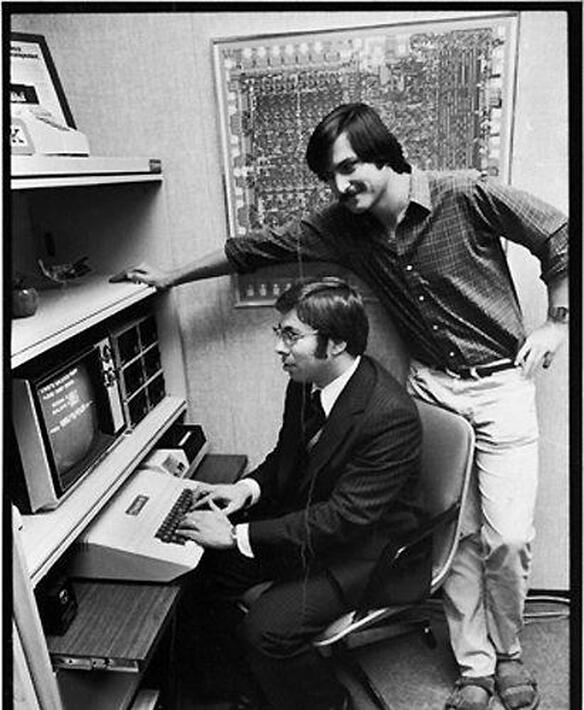
Above: Steve Jobs and Steve Wozniak with the Apple II. On the wall behind them hangs a print of the 6502, the CPU in in the Apple I and Apple II computers.
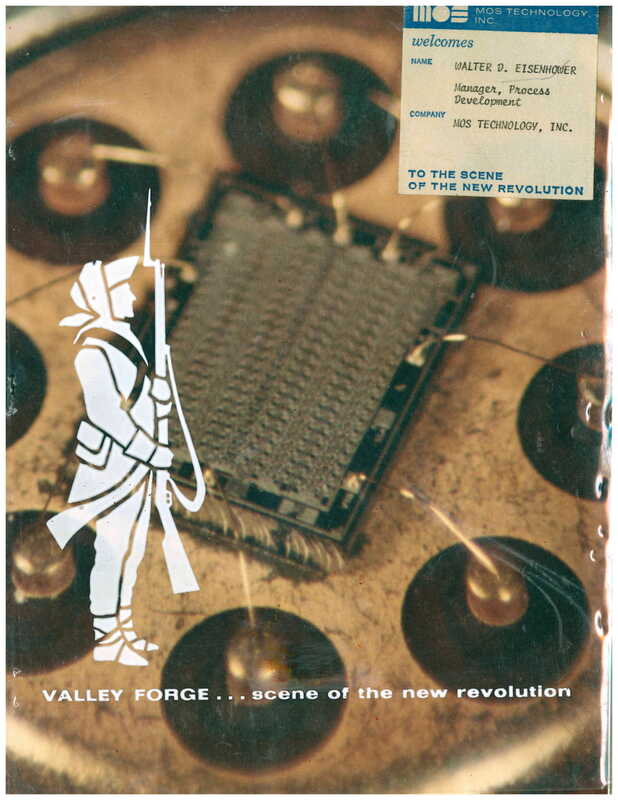
Brochure distributed at the founding/open house for MOS Technology in 1970. The theme of the event was "To the Scene of the New Revolution," a prophecy that came true when MOS Technology introduced the 6502 just 5 years later, ushering in the personal computing revolution. Courtesy of Diana Eisenhower, daughter of Walt Eisenhower.
|
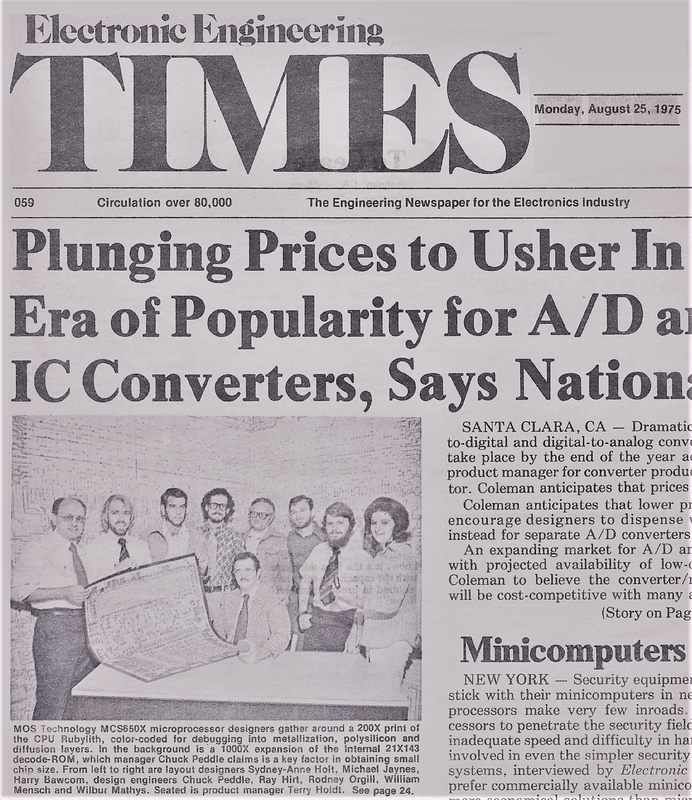
1975 article from Electronic Engineering Times announcing release of the 6502. Production team featured in photo, from left to right: standing: Wil Mathys, Bill Mensch, Rod Orgill, Ray Hirt, Chuck Peddle, Harry Bawcom, Mike Janes, and Sydney-Ann Holt. Seated: Terry Holdt. NOTE: When originally published, either the photo was inverted or the caption editor was in error, noting the names of the individuals pictured in the photo backward (from right to left instead of left to right).
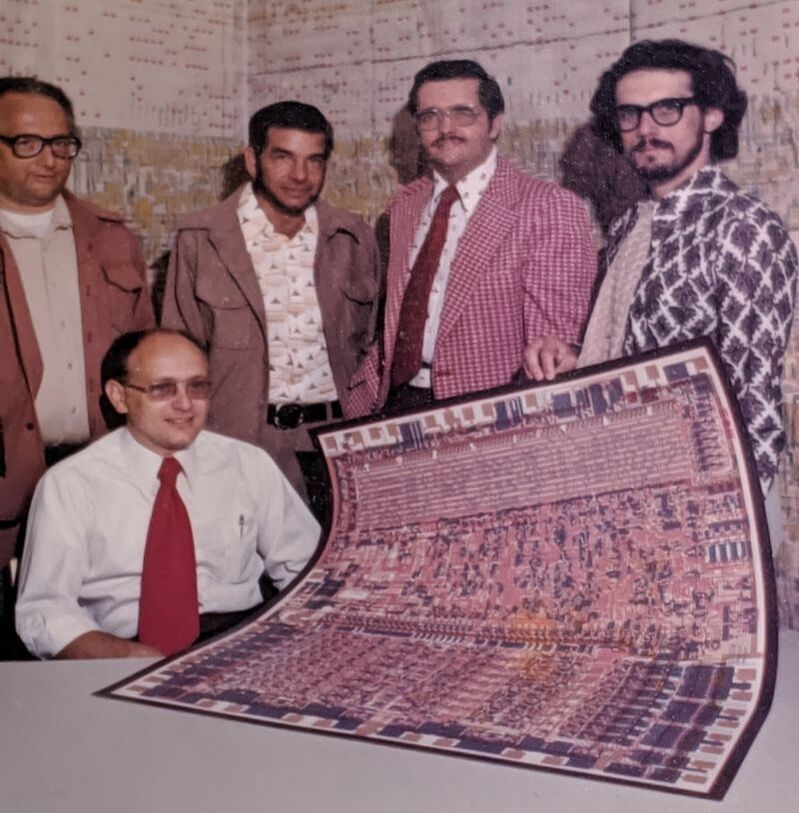
MOS Technology employees posing with a print of CPU Rubylith. Standing (from left to right): Chuck Peddle, Rod Orgill, Terry Holdt, and Ray Hirt. Seated: Wil Mathys. Courtesy of Phyllis Orgill, widow of Rod Orgill.
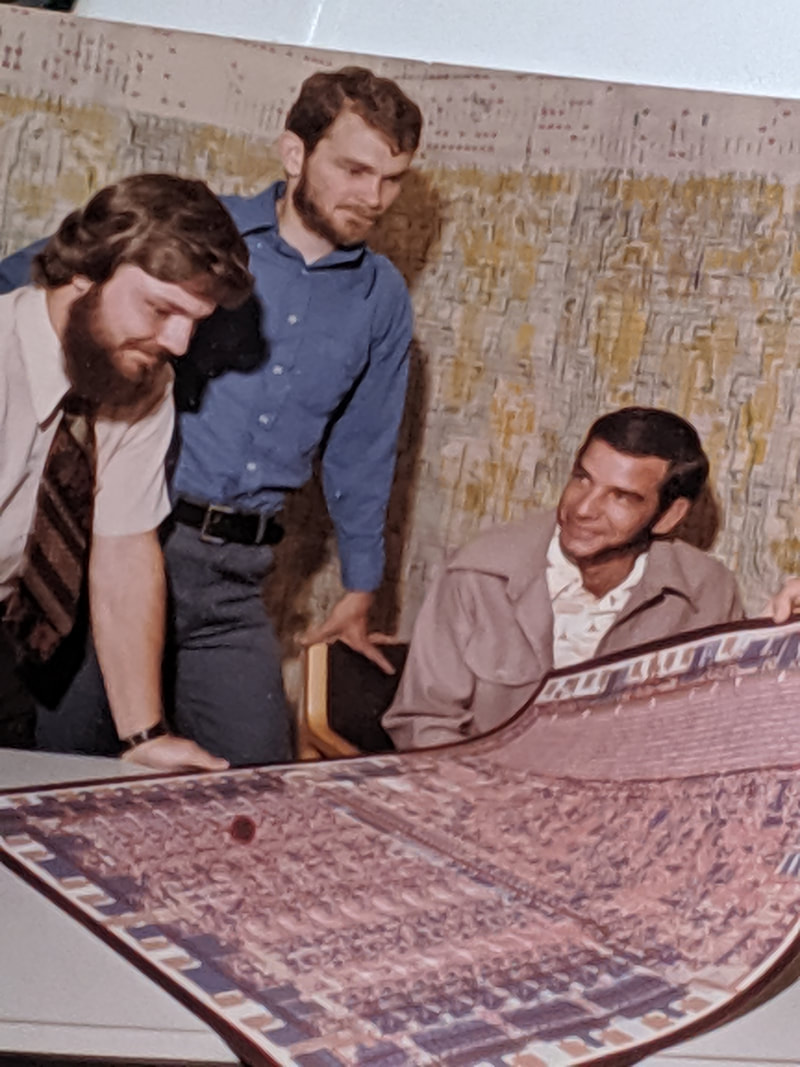
MOS Technology employees posing with print of CPU Rubylith. Standing: Mike Janes (left) and Harry Bawcom (right). Seated: Rod Orgill. Photo courtesy of Phyllis Orgill, widow of Rod Orgill.
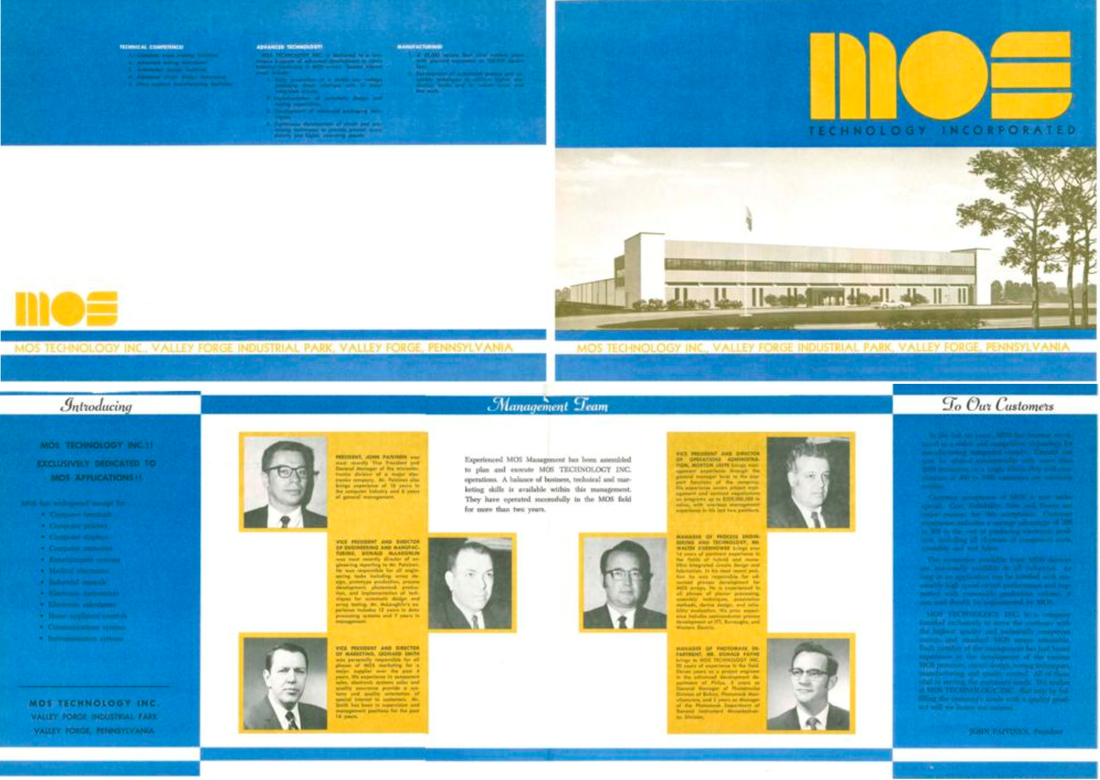
MOS Technology brochure introducing its management team (circa 1970). Courtesy of Diana Eisenhower, daughter of Walt Eisenhower.
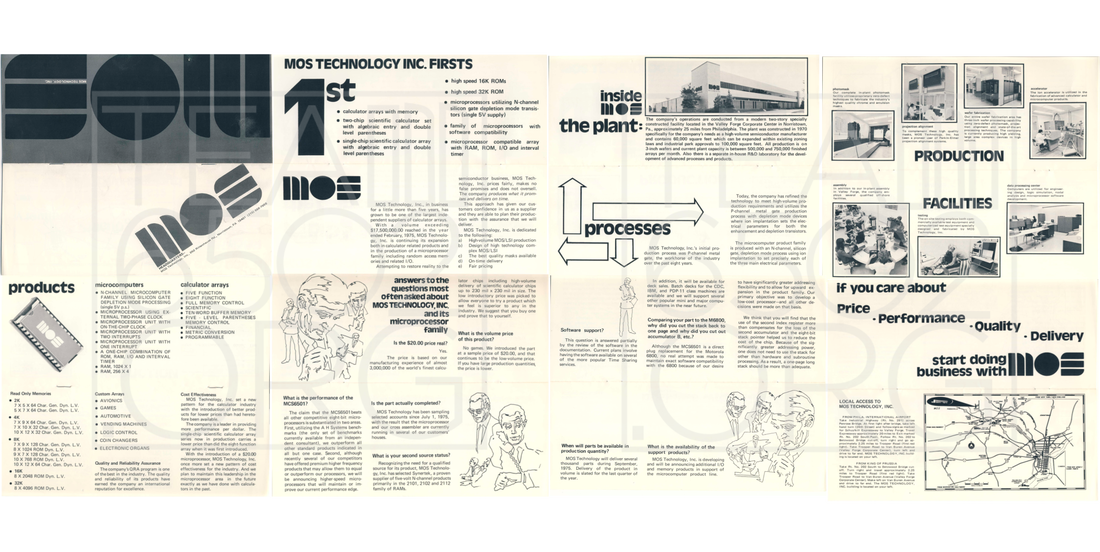
MOS Technology marketing brochure.
|
No comments:
Post a Comment
Note: Only a member of this blog may post a comment.